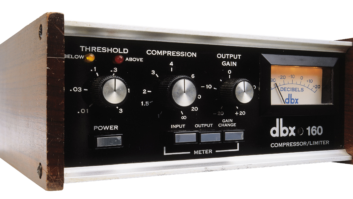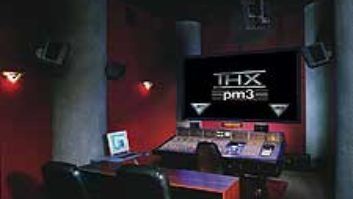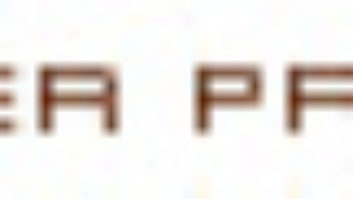Since 1995 I’ve focused on the repair of digital tape machines-4mm, 8mm and S-VHS-but it wasn’t always that way. Recently, three projects jolted me back to my roots. A man gives his son a Tascam 80-8, a church wants to digitize 40-year-old sermons, and a live Joni Mitchell recording (from the Main Point in Philadelphia some 30 years ago) recently arrived in the mail. These are reasons enough to compile some data and take out my digital crayons…
Meanwhile, neophyte analog freaks are scouring online auctions such as digibid.com and ebay.com for pro and semi-pro classics. Unless they understand what they’re getting into, I am afraid for them. Whether you already own or are thinking about buying an analog tape machine, it is important to know the maintenance issues, especially for that most expensive wear item, the headstack. A deal is only a deal when you are capable of smiling after the selling price is mated with the maintenance cost. Tape machines have lots of electromechanical moving parts that wear out or get funky, even from lack of use. If your budget is large enough for “piece of mind,” otari still manufactures the MTR-90 III multitrack and inventory remains from Studer’s final production run in 1999.
GEN-FLUXI’ve made one very broad assumption for this article, that a new generation needs to become familiar with the nuances of analog recording equipment-pro and semi-pro-including tape and the effects of aging. The dividing line is track density: 24-track translates into three tracks per 11/44-inch; semi-pro is four to eight tracks per 11/44-inch, referred to as “narrow format” in this article. A table will be provided in Part Two.
Part one will focus on analog idiosyncrasies, how to assess the machine and what to do when the VU meters are dancing instead of standing at attention. I will barely scratch the surface of alignment preparation before running out of space in this issue. Part Two will cover electronic and mechanical alignment. For a list of test equipment, check out the May 2000 issue of Mix or go to www.mixonline.com. At minimum, you should at least have an oscillator.
MOVING THE MOUNTAINFew project studios can boast a full-time technician-let alone one with analog tape machine experience. Fewer experienced technicians are willing to make house calls because older professional machines need an overhaul, not a tune-up. You should establish a healthy relationship with technical support personnel; they are human beings, after all, performing a service that is a labor of love with skills that are becoming exceedingly rare.
There are several third-party companies providing analog machine support listed in the “Selected Analog Recorder Parts/Service Resources” sidebar. Some, like ATR Service, will even send a shipping container. For example, an Ampex ATR-100 shipping crate is $225 (an additional crate for the pedestal is $75). Empty crates are shipped via UPS. Cargo Inc. (www.cargo-inc.com) will ship an ATR coast-to-coast for about $300 (insurance will vary). An Ampex MM1200 crate is $475; shipping is about $600.
on the upside, analog machines will continue to be serviceable-now, after 20, 30 or 40 years and in the future-because they mostly consist of hardware that any skilled machinist can re-create. (No digital format will be as easy to support after manufacturers throw in the towel.)
CONSUMER ARCHIVEon the consumer side-for the quarter-track stereo format, at speeds of 7.5 ips and less-your only option is to find a good used machine. The Revox A77 and B77 are both excellent choices as are the Technics 1500 and the otari 5050 series. All are three-motor decks with 10-inch reels available in speeds from 331/44 to 15 ips. If you need a machine that runs at 171/48, consider the Tandberg 9000X, which has three motors, 7-inch reel capacity and speeds up to 7.5 ips.
KEEP YOUR MACHINE HEALTHY: SOME SUGGESTIONSTweaking open-reel tape machines triggers a list of “things to remember.” Here’s the first batch:1. When threading, make sure the tape is snugly wound around the reel hub before pressing Fast Wind or Play. (Careless threading leads to stretched tape, bent or broken guides.)
2. Use water-based cleaners on rubber parts. Do not use stuff that says “rubber cleaner” unless you are sure it is water-based. Windex and Fantastic do a good job. Formula 409 works well on ceramic capstans. Don’t let any cleaners or solvents get into the capstan bearing. Dilute if necessary.
3. Always observe the tape as it passes through the guides, over the heads and between the capstan and pinch roller. Tape should not be riding up and down or buckling where the edges meet the guides. You should not be able to see the “edge tracks” of the head.
4. Use 99% anhydrous (or denatured) alcohol to clean the heads in strong light. Do not use rubbing alcohol because it’s 30% water.
5. Keep tweakers (fiddlesticks) in pocket protectors unless chaperoned or until you feel extremely confident.
6. Demagnetize your tools.
7. odd behavior may be attributable to the machine, but never rule out the tape. Since the ’70s, high-output tapes have been prone to shedding. Always inspect the heads and guides before calling a technician or grabbing a screwdriver. The biggest challenge, even for veterans, is not realizing a tape has deteriorated before carelessly winding end to end. Visit my Web site, www.tangible-technology.com, for an article on tape restoration.
FREAK-N-SEE RESPONSETape machines don’t go drastically out of alignment unless something is wrong-such as intermittent parts, bad tape or poor mechanical stability-but don’t expect ruler-flat response like digital. Figure 1 shows the performance variables of a Studer B67 configured as a 11/44-inch 2-track, the format equivalent of a 2-inch 16-track. To show the relationship between speed and track width, consider the following: Compared to 2-inch 16-track, 24-track machines running at 30 ips have difficulty with frequencies less than 60 Hz, the same as narrow-format machines such as the Fostex E-16 running at 15 ips. This is a head-related issue. only so much metal and wire can be crammed into a small space.
Figure 2 is a half-inch cross section of tape. Left-to-right track density increases starting with 11/42-inch 2-track. The “narrow” formats are to the right of professional 24-track. Wider tracks yield more signal, less noise, better low-frequency response at higher speeds and more headroom across the frequency spectrum.
BUMP AND GRINDBass bumps and the natural saturation at extreme low and high frequencies is a form of peak limiting, giving analog tape a characteristic smoothness or that dreaded and overused word “warmth.” For years, recording engineers have been experimenting with speed (no comments), track width, elevated levels and noise reduction in an attempt to find the best match for the material being recorded. The 15 ips 2-track on 11/44-inch tape was once the norm, and noise reduction was a popular option. In the late ’70s, 30 ips, elevated levels and “no-noise” were the trend until the ’80s ushered in the 11/42-inch format, but that still wasn’t quiet enough for purists who would rather not use noise reduction.
NOISE REDUCTIONIt should be noted that there is nothing wrong with noise reduction (NR) other than the additional electronics required. Be a purist if you want, but sometimes noise gets in the way. The “fault” of NR is that it does not tolerate frequency-response anomalies. Narrow tracks have exaggerated head bumps and reduced headroom at low frequencies. Headwear further antagonizes response at both ends, increasing low-frequency bumps and decreasing high-frequency response. This combination is deadly when NR is added, and narrow-format machines cannot be operated without it.
All machines have playback and record adjustments in the midrange at 1 kHz, but narrow-format machines often have no low-frequency (headwear compensation) adjustment and minimal high-frequency record EQ adjustment range. Tempting as it may be, bias should not be used to manipulate record EQ because its purpose is to minimize distortion. See Fig. 3, BASF EMTEC Bias vs. Distortion curves.
THE LAP DANCEIt is important to emphasize that head surface condition is a prerequisite to an electronic alignment. If the high frequencies waver or increase in level after applying some drag to the supply reel, look closely as the tape passes through the guides as well as between the capstan and pinch roller. Any up-and-down motion can cause the signal level to vary. More likely, a worn head has diminished tape-to-head contact. Increasing tape tension is not an option, especially when considering high head-replacement prices.
Table 1 compares 24-track head prices from the manufacturer with those of a third-party source. Dizzy? Worn heads can be resurfaced or “re-lapped,” in this case for about 25% of the cost of a new head. To get the most head life, the machine must be well-maintained to minimize normal headwear. Poor mechanical alignment can cause the heads to wear unevenly; the “good” end is sacrificed to match the bad end in the lapping process. Head restoration specialists can determine head life, so have those heads checked before purchasing a used machine.
BASIC MAINTENANCE FOR ALL MACHINESUse 99% (anhydrous) isopropyl or denatured alcohol on a cotton swab to clean the heads. Do not use rubbing alcohol, which is 30% water. To clean rubber parts, use only water-based cleaners such as Windex or Fantastic, dilute if necessary and wipe off the excess with a damp cloth. Formula 409 works well on ceramic capstan shafts but don’t let liquid drip into the capstan bearing. Do not use “cleaners” designated for rubber parts or pinch rollers unless you are certain they are water- based. Some are solvents that can damage or prematurely age a pinch roller, and remember, parts are getting more difficult to find and more expensive with each passing year.
DEMAGNETIZATIONThe head assembly relies on electrodynamic magnetism to function. Static magnetism-as found in magnetic screw- drivers and loudspeakers-is the devil. Head demagnetization is considered routine maintenance, but only when performed by experienced personnel. Use only the R.B. Annis Han-D-Mag, as shown in Fig. 4. Throw away cheap demagnetizers with an on/off switch as these are extremely dangerous.
Before demagnetization, remove any tape from the machine and turn the power off. Power-up the demagnetizer away from the machine, and do not remove power until the device is at least three feet from the machine. (I am being overly cautious, and I fully understand the inverse-square law.) once powered, slowly move the demagnetizer tip toward the first head-the Han-D-Mag has a protective plastic tip-slowly moving up and down. Continue this motion while gradually pulling away from the heads until each has been demagged. Be sure to demagnetize your tools before playing the test tape. Inexperienced demagnetization is more dangerous than doing nothing, so again, do not attempt this process unless you are confident. An experienced technician will surely show you how to safely use “the force.”
TEST TAPES AND ALIGNMENT BASICSPlayback alignment requires reference tones from either a test tape or the “project” tones that accompany the master tape. A test tape is typically a full-track recording (across the full width of the tape). Unless a test tape claims “compensation for multitrack reproduction,” it cannot be used to set low-frequency playback level. No machine has a low-frequency record adjustment. In nearly every instance, accurate low-frequency playback adjustments are made after first recording a bass sweep, which requires an oscillator capable of the same. on a three-head deck, it is possible to playback while recording. on a two-head deck, the process requires more patience. (Full alignment procedures will be detailed next month in Part Two of this article.)
The most important reference tone is 1 kHz for operating level, specified in nanoWebers per meter (nWb/m). The Equalization (EQ) Curve is specified as either NAB AES (American Standard) or IEC CCIR (European Standard). Make sure the test tape you buy or rent is the correct speed and EQ for your machine. Most narrow-format machines are calibrated as per IEC CCIR with rare exception. The most common error is to attempt narrow-format calibration using an “American” NAB test tape.
Professional machines have a generously wide adjustment range, and many narrow-format machines have extremely limited range. Many Tascam MS-16s do not have enough range in the bias control to accurately find the peak at 10 kHz. Most Fostex machines have a continuously variable bias capacitor. Without a voltmeter or oscilloscope, it is possible to be on the wrong side of the bias peak.
Note: Modern high-output tapes are not a good match for older pro or narrow-format semi-pro machines, which may not have enough current to fully erase previously recorded material. Compared to older generations of tape, modern tapes can be an additional half-mil thicker than the original “1.5 mils,” for which the machines were designed. (one mil is 0.001 inches or 25.4 microns.) Thicker tape is harder to pull and, if tension is not adjusted, can cause more than the usual amount of headwear. Attempting to operate any narrow format machine without its integrated NR is not recommended, nor should the operating level be changed from the manufacturer’s recommendation. While it may be possible to disable NR for selected tracks, there will never be enough headroom to sufficiently lower the noise floor for all tracks.
TRACK WIDTH PHENOMENAThe weaknesses of analog tape are also its strengths, but to compete with digital, the analog envelope has been pushed to new limits. The three high output tape formulations-BASF/EMTEC SM900, Ampex Quantegy 499 and the former 3M product, 996, manufactured by Quantegy as GP9-are not new, but when combined with the “recent” 1-inch, 2-track format, noise is at an all-time low and many of analog’s idiosyncrasies are minimized. I won’t say it’s almost like digital. (Who said that?)
LAST LINKSAt this point, I have enough room to tell you to put up a new reel of tape, route an oscillator set to 1 kHz to all tracks, and press Record. (Noise reduction should be bypassed.) observe input vs. playback, and note the differences. If input does not agree, you need a voltmeter to confirm that the incoming levels are good. or route the oscillator to one track at a time to see if there is an improvement (much less fun). Follow the machine’s instruction manual for record level and input calibration. Buy a manual if you don’t have one.
The Web offers numerous useful resources. For more information about MRL and BASF test tapes, visit http://home.flash.net/~mrltapes/andwww.emtec-magnetics.com. Quantegy (www.quantegy.com) also offers a really cool interactive site that can show you how to align for elevated levels.
1.Check Playback Level (1 kHz)
2.Check Azimuth (8 and 16 kHz)
3.Check High-Frequency PB Level
4.Check Bias
5.Check Record Level (1 kHz)
6.Check HF EQ Level (10 kHz)
7.Record a Bass Sweep
on a three-head deck, record a bass sweep while monitoring via playback head. Align until peaks and dips fall on equal sides of “0VU,” then select a low frequency that falls on “0VU.” Print that tone, and note it on the box. Include the bass sweep if the tape becomes a Mix Master.
on a two-head deck, record a bass sweep. Check playback, noting the peaks and dips, then select a low frequency that falls on “0VU.” Print that tone and note it on the box.
Manufacturer of Han-D-Mag demagnetizer1101 N. Delaware St.Indianapolis, IN 46202 317/637-9282
Athan CorporationTape path components and motor work50 S. Linden Ave., No.10South San Francisco, CA 94080 650/589-5206www.athan.com
ATR Service CompanyAmpex tape machines (ATR and MM Series)1600 Pennsylvania Ave., Suite 23York, PA 17404 717/852-7700www.atrservice.com
International Electro-Magnetics (IEM)Heads, relapping and repairs350 N. Eric Dr.Palatine, IL 60067 800/227-4323www.iemmag.com
JRF Magnetic SciencesNew heads, relapping, test tapes and width/format conversions249 Kennedy Rd.Greendell, NJ 07839 973/579-5773www.jrfmagnetics.com
MDI/Precision MotorWorksMotor rebuilding, parts, rollers and supplies241 White Pond Rd.Hudson, MA 01749 978/562-4420www.precisionmotorworks.com
Media Tech/Northern Lights AudioStuder specialists972 N. Fifth St.New Hyde Park, NY 11040 516/291-0281www.northernlightsaudio.com
RTZ AudioRedesigned Ampex electronicsP.o. Box 872Alpharetta, GA 30009 770/346-9704www.rtzaudio.com
Sequoia ElectronicsAmpex and Scully parts supply422 Avenida AbetosSan Jose, CA 95123 408/363-1646
Sprague MagneticsHeads, repairs and Ampex and general parts12806 Bradley Ave.Sylmar, California 91342 818/364-1800http://sprague-magnetics.com
TSI-Technical Services Inc.Ampex partsVern Sauer107 S. PrindleArlington Heights, IL 60006 847/392-2958





